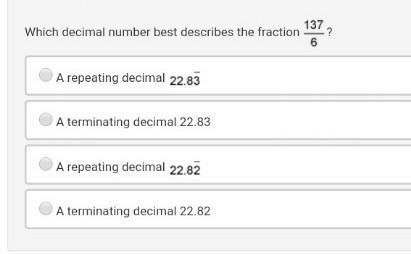
Mathematics, 21.10.2019 13:50 boogiedownclown
The edges of a cube are 5 centimeters each and the diagonal of a face is approximately 7 centimeters. what is the approximate area of the cross section passing through the diagonals of opposite faces of this cube?
a.12 square centimeters
b.25 square centimeters
c.35 square centimeters
d.49 square centimeters

Answers: 2


Other questions on the subject: Mathematics

Mathematics, 21.06.2019 18:00, nefertitihorne12
Me asap! what is the slope of this line? enter your answer in the box.
Answers: 2

Mathematics, 22.06.2019 00:10, jocelynfray16
Change negative exponents to positive. then solve. round to four decimal places
Answers: 3

Mathematics, 22.06.2019 02:00, lexhoangg
Now, martin can reasonably guess that the standard deviation for the entire population of people at the mall during the time of the survey is $1.50. what is the 95% confidence interval about the sample mean? interpret what this means in the context of the situation where 95 people were surveyed and the sample mean is $8. use the information in this resource to construct the confidence interval.
Answers: 3

Mathematics, 22.06.2019 03:00, kittenlover5031
In this problem, we explore the effect on the standard deviation of multiplying each data value in a data set by the same constant. consider the data set 14, 6, 8, 15, 15. (a) use the defining formula, the computation formula, or a calculator to compute s. (round your answer to one decimal place.) s = 4.28 (b) multiply each data value by 3 to obtain the new data set 42, 18, 24, 45, 45. compute s. (round your answer to one decimal place.) s = 12.83 (c) compare the results of parts (a) and (b). in general, how does the standard deviation change if each data value is multiplied by a constant c? multiplying each data value by the same constant c results in the standard deviation remaining the same. multiplying each data value by the same constant c results in the standard deviation being |c| times as large. multiplying each data value by the same constant c results in the standard deviation increasing by c units. multiplying each data value by the same constant c results in the standard deviation being |c| times smaller. (d) you recorded the weekly distances you bicycled in miles and computed the standard deviation to be s = 3.8 miles. your friend wants to know the standard deviation in kilometers. do you need to redo all the calculations? yes no given 1 mile ≠1.6 kilometers, what is the standard deviation in kilometers? (enter your answer to two decimal places.)
Answers: 1
You know the right answer?
The edges of a cube are 5 centimeters each and the diagonal of a face is approximately 7 centimeters...
Questions in other subjects:


Computers and Technology, 23.12.2021 07:40

Computers and Technology, 23.12.2021 07:40










